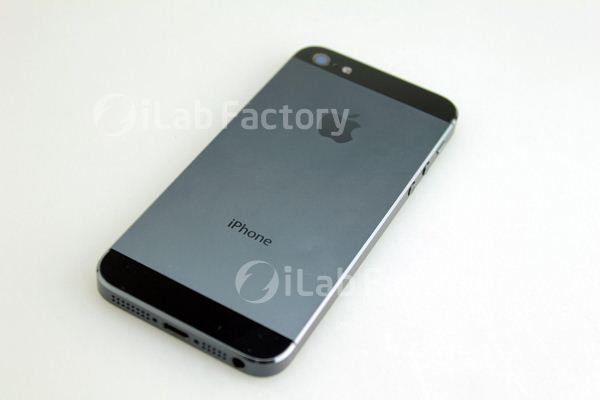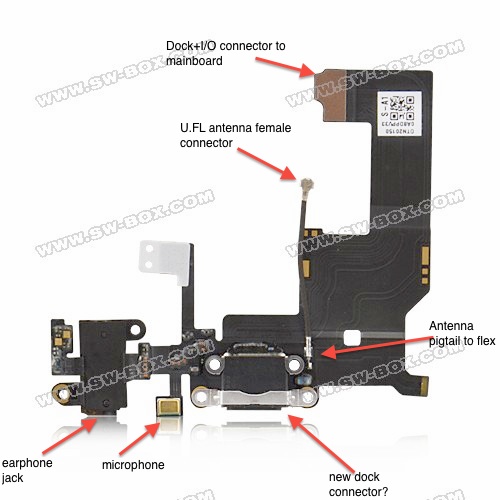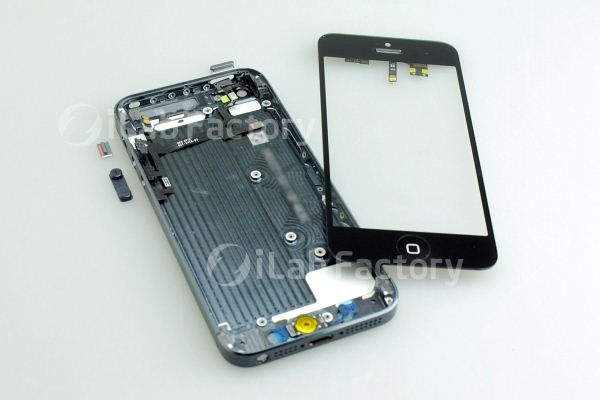Preparing for the iPhone Next: Rumors Analyzed
by Brian Klug & Anand Lal Shimpi on August 27, 2012 9:40 PM EST- Posted in
- Smartphones
- Apple
- Mobile
- iPhone
While we typically don't comment on rumors we don't know to be true at AnandTech, we often get requests to help set rational expectations ahead of major iDevice launches. The shroud of secrecy around major Apple launches can pave the way for both sensible and unrealistic conclusions.
Given the growth of Apple's iPhone/iPad devices, it has become increasingly difficult for suppliers in the chain to remain mum about any changes. Similar to how we often get early access to CPUs, motherboards and other components out of Taiwan, it has become increasingly commonplace to see leaks of iDevice components out of the big ODMs in China.
Apple is largely expected to launch its sixth iPhone next month. The historical cadence of design, SoC, and cellular changes are in the table below:
| Apple iPhone - Historical Trends | |||||||
| Release Year | Industrial Design | CPU Architecture | GPU Architecture | Cellular Architecture | |||
| iPhone | 2007 | 1st gen | ARM11 | MBX-lite | Infineon S-Gold 2 | ||
| iPhone 3G | 2008 | 2nd gen | ARM11 | MBX-lite | Infineon X-Gold 608 | ||
| iPhone 3GS | 2009 | 2nd gen | Cortex A8 | SGX-535 | Infineon X-Gold 608 | ||
| iPhone 4 | 2010 | 3rd gen | Cortex A8 | SGX-535 | Infineon X-Gold 618 in 4 GSM / Qualcomm MDM6600 in 4 CDMA | ||
| iPhone 4S | 2011 | 3rd gen | 2 x Cortex A9 | SGX-543MP2 | Qualcomm MDM6610 (MDM6600 w/ ext. trans) | ||
| iPhone Next | 2012 | ? | ? | ? | ? | ||
Trends are pretty easy to spot in the table. With the exception of the first iPhone, the industrial design appears to be on a 2-year cadence. The CPU and GPU architectures are also on the same 2-year cadence. From a silicon standpoint even the cellular architecture is trending towards the same 2-year cadence, with a few notable exceptions (e.g. GSM/CDMA iPhone 4 divide).
Based on historical trends alone it's pretty easy to conclude that we'll see a 4th generation chassis, a pair of ARM Cortex A9s and a PowerVR SGX 543MP2 under the hood. Add the assumption of LTE (a reasonable one to make) and you have a pretty believable story. It turns out the currently available evidence helps corroborate this, but let's dig through what's out there to see how this all fits.
Chassis & Display
The chassis is largely a known quantity by this point. Enough examples out of China have surfaced to support the current working theory of a 4-inch diagonal (16:9) display in a slightly taller chassis with roughly the same width. Put simply, it's a new taller aspect ratio, which also has the consequence of including a larger 4-inch, 640 x 1136 display. The result is a change only in one dimension for developers to worry about.
The other big rumored change is a move from on-cell touch sensing (which places the drive and detect ITO layers above the LCD assembly) to an in-cell touch solution. In-cell being the operative word because the drive layers are integrated into the LCD gating (or use it natively), or on the color filter layer. There's some debate about what counts as on-cell and in-cell that isn't quite settled, but ultimately what it boils down to is a thinner display stack that will contribute significantly to the reduction in overall device thickness that is rumored for the upcoming iPhone.
While the industrial design remains quite similar at a high level, there do appear to be some major changes. Where the 4 and 4S designs used front and back glass with an external metal band for support, the leaked designs out of China feature a metal unibody construction with cutouts for RF windows at top and bottom. There's enough evidence of this from the CNC machine marks visible on examples, and moreover moving to a larger form factor requires a beefier chassis.

Black regions at top and bottom are likely RF window cutouts
With top and bottom RF windows (which appear to be glass) there shouldn't be any implications on antenna performance for cellular. If you followed our coverage of the evolution of Apple's cellular antenna design from the iPhone 4 GSM, to 4 CDMA, to 4S, you'll notice that this is a clear next step, largely inheriting the top/bottom antenna split from the 4S which fully mitigated deathgrip. Interestingly enough the exterior band appears to have a different chrome finish rather than the matte stainless steel of previous designs.

Bottom flex cable, annotations ours
Other things like moving the 3.5mm headphone jack to the bottom of the device and the mini 9-pin dock connector are fairly well corroborated by leaks with components that all fit together inside the case. Interestingly enough, parts indicating the mini dock connector and relocated headphone jack have been circulating for nearly 4 months.











131 Comments
View All Comments
gilesrulz - Tuesday, August 28, 2012 - link
You're admittedly not an Apple user or a future Apple user, so why would Apple build a phone for you?While there may be a small population that share your desire for NFC and mobile payments generally, for most it is a solution looking for a problem (at least in the US - I have read interesting use cases for the developing world).
As for the proprietary port, there was an exception put into the law that allows for adapters to USB, which is what Apple has bee providing since the law went into effect.
alxx - Tuesday, August 28, 2012 - link
NFC I'd prefer not to have until the security bugs are worked out it.Personally I prefer a phone that fits in my pocket (shirt and pants) and doesn't need a bag or belt clip to carry it
mantikos - Tuesday, August 28, 2012 - link
Stop the hobby product BS, its a failed product...there is nothing known as a hobby product...if Surface flops tomorrow, would you be kind enough to call it just a 'prime the pump' product because MSFT called it that?!gilesrulz - Tuesday, August 28, 2012 - link
The have sold more than 4.2 million of them (2nd Gen). It is not a "failed product" or a "flop".jamyryals - Tuesday, August 28, 2012 - link
Exactly right, it's only a hobby product for Apple because in comparison to their other revenue streams it's tiny. For almost any other companies selling 4 million of anything would be a huge success. I bet Google wishes they'd sold even 1 million Qs.KoolAidMan1 - Tuesday, August 28, 2012 - link
How is it failed? It sells more than the XBox 360, that's pretty successful for a consumer gadget.It may be a hobby compared to an iPhone or iPad, but anything else is small in comparison. The iPhone alone makes more revenue and profit than Windows and Office combined.
Doormat - Tuesday, August 28, 2012 - link
Any word on whether its feasible for IGZO screens or not? 50-90% lower power consumption.swb311 - Tuesday, August 28, 2012 - link
IGZO is not for mobile right now. It's using In-Cell which might be confusing. IGZO is a replacement or different type of LCD which may end up in an eventual iTV or newer iMacs but definitely not in phones any time soon.HisDivineOrder - Tuesday, August 28, 2012 - link
Please, please let them update the iPod Touch. It's beyond long in the tooth. Hell, I won't mind if they discontinue the iPod Touch line in favor of an iPad Mini line that is essentially the same thing at the same 4" diagonal of the iPhone, put the 7" iPad in as an iPad Air, and let the iPad become the Big-Daddy Pro of the iPad lineup.Ethaniel - Tuesday, August 28, 2012 - link
I agree, I would love to see the iPod Touch updated, but no, I don´t want them to discontinue it. You have 90 percent of the iPhone´s functions without having to put a provider´s "ball and chain" in your ankle... oh, wait...My point is, I want a "tablet" that fits in my pocket. The closest thing so far without breaking the bank where I live is the current iPod Touch. If there are no updates, I guess I´ll grab the current gen.